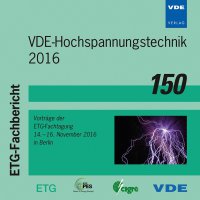The Numerical Indices Proposed for the Interpretation of the FRA Results: a Review
Konferenz: VDE-Hochspannungstechnik 2016 - ETG-Fachtagung
14.11.2016 - 16.11.2016 in Berlin, Deutschland
Tagungsband: VDE-Hochspannungstechnik 2016
Seiten: 7Sprache: EnglischTyp: PDF
Persönliche VDE-Mitglieder erhalten auf diesen Artikel 10% Rabatt
Autoren:
Samimi, Mohammad Hamed; Tenbohlen, Stefan (University of Stuttgart, Institute of Power Transmission and High Voltage Technology, Stuttgart, Germany)
Inhalt:
Frequency Response Analysis (FRA) is an effective diagnostic technique for detection of mechanical deformations inside a power transformer. The FRA technique has been an interesting topic for researchers in the field and has been used increasingly in the last decade. The results of previous studies have led to the standardization of the FRA measurement procedure, but the interpretation process is still a subject of study to reach a reliable algorithm for mechanical condition assessment of power transformers. The interpretation of the FRA results means to detect the extent and the type of a mechanical fault followed by a decision about the transformer situation, whether it needs a repair or can continue its normal operation. The numerical indices are one of the algorithms which have been proposed for the interpretation, where the amount of an index extracted from two FRA traces can show the extent of a mechanical fault. The first trace is the newly measured one whereas the second trace serving as a reference can be a trace recorded from either the same winding previously or a similar transformer or another phase of the same transformer. Different numerical indices have been proposed in the literature, and this paper tries to review and to compare these indices from different aspects in order to expand the knowledge about their characteristics. First, the numerical indices proposed in the literature are formulized and proper references are introduced for each index. Then, the indices are categorized into three main groups. The first group of the indices is extracted directly from the FRA trace vectors without additional computations. The second group is based on the frequency and amplitude of the resonance (peak) and antiresonance (trough) points in the FRA trace. The third group is based on the Estimation of the transfer function as a rational function. The advantages and disadvantages of each group are addressed based on previous studies. Afterward, the experiences of working with indices are reported and, finally, the vital steps which are needed to standardize the indices are discussed. The survey provided in this paper can be beneficial for the standardization process of these indices.


